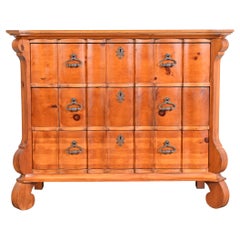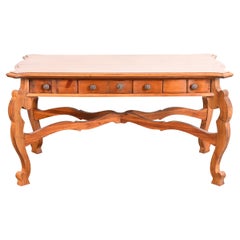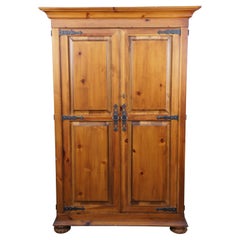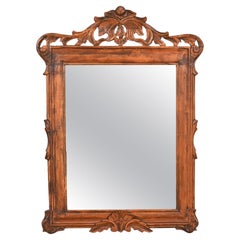Jim Peed For Romweber
Late 20th Century American Baroque Commodes and Chests of Drawers
Pine
Late 20th Century American Baroque Desks and Writing Tables
Brass
Recent Sales
Late 20th Century Rustic Cabinets
Pine
20th Century American French Provincial Wall Mirrors
Mirror, Pine
Late 20th Century American Classical Greek Sideboards
Walnut, Burl
Vintage 1980s American Art Deco Desks
Elm
Late 20th Century American Console Tables
Wood
People Also Browsed
20th Century French Louis XVI Dining Room Chairs
Brass
Antique Late 19th Century Chinese Beds and Bed Frames
Lacquer, Wood
Antique 1840s Austrian Biedermeier Coffee and Cocktail Tables
Walnut, Softwood
20th Century French Louis XVI Dining Room Chairs
Brass
2010s Italian Modern Wall Lights and Sconces
Murano Glass
Antique 1850s French Napoleon III Dining Room Tables
Walnut
Mid-20th Century Italian Baroque Tables
Wood
Antique 1770s English Rococo Porcelain
Porcelain
Antique Early 19th Century Austrian Biedermeier Sofas
Upholstery, Walnut
Mid-20th Century Italian Louis XV Commodes and Chests of Drawers
Kingwood, Mahogany, Olive, Satinwood
Vintage 1960s American Mid-Century Modern Night Stands
Walnut
Antique Late 19th Century French Louis XVI Beds and Bed Frames
Cane, Walnut, Paint
Mid-20th Century Italian Louis XV Commodes and Chests of Drawers
Bronze
Early 20th Century French Art Nouveau Vases
Glass
Antique Early 19th Century German Baroque Wardrobes and Armoires
Pine
Vintage 1920s Swedish Art Deco Secretaires
Birch
Romweber Furniture Co. for sale on 1stDibs
Some vintage Romweber Furniture Company designs may strike the young as passé. But for fans of a certain age, the American brand never went out of style.
The Romweber story began in the late 1800s, with the launch of American Furniture Company, which made bedroom furniture, Batesville Cabinet Company, a dining-room-set manufacturer, and Batesville Coffin Company. The three companies eventually merged to become a large and reputable manufacturer of case goods, furniture and more.
Not unlike many American companies, production at Romweber suffered during the Great Depression. The brand managed to stay afloat by making a rather strange pivot — to selling five-pound fruitcake boxes. During the Second World War, Romweber pivoted again, this time to the production of ammunition boxes and pontoons for American troops and, naturally, furniture for officers’ quarters.
While Romweber furniture (spelled “RomWeber” in vintage advertisements), dating back to the early 20th century, had designers working in the French Rococo and Chippendale styles, the brand is best known for its mid-century modern pieces. In the postwar years, Romweber manufactured walnut case pieces and storage cabinets that featured decorative olive-ash and burl-wood inlays with brass hardware as well as solid oak credenzas and dining tables designed by the likes of Harold Schwartz. For collectors of sophisticated 1950s furniture, the company’s sturdy Viking Oak line is particularly popular.
“It’s not uncommon for customers to say, ‘My parents had this Romweber Viking set,’” says Adam Cramer of collectors who visit Liberty & 33rd, the gallery he owns with his wife in South Bend, Indiana, about three hours north of Romweber’s birthplace in small-town Batesville. “It’s solid oak,” Cramer tells 1stDibs of the line of tables, chairs, desks and more.
Solid oak is the product of slow-growing deciduous trees. Solid oak furniture is durable, desirable and an investment that is usually associated with a hefty price. In solid oak furnishings, such as those that make up the covetable Romweber Viking Oak line, which launched in 1935, there aren’t any scraps of other components in the construction.
Inspired by Scandinavian folk design, Romweber’s Viking Oak is said to have enjoyed one of the longest runs for a commercial furniture line in history. The collection went out of production in the late 1980s, and mid-century editions remain highly prized for their exceptional quality and hand-carved details.
Find vintage Romweber furniture on 1stDibs.



